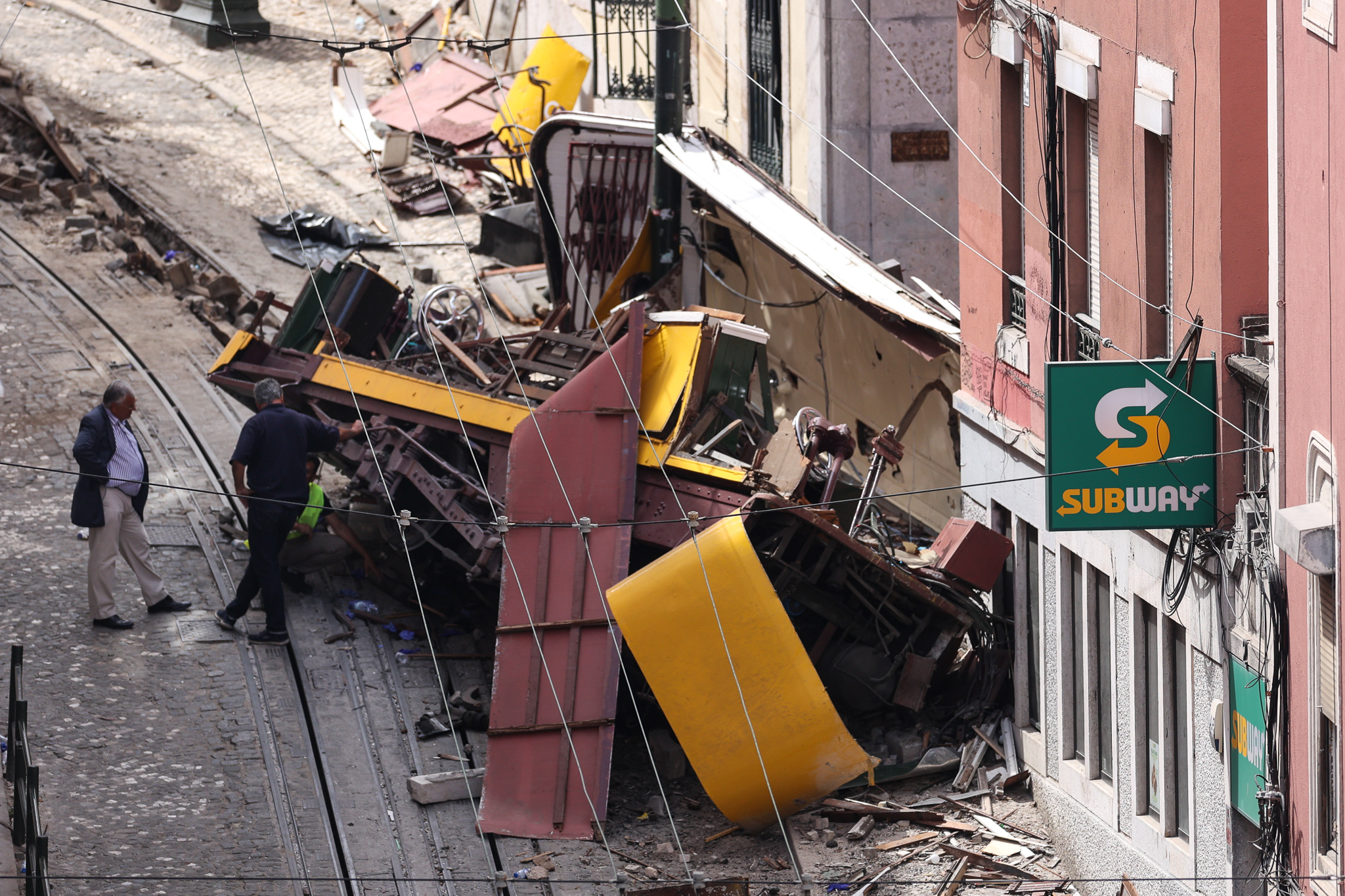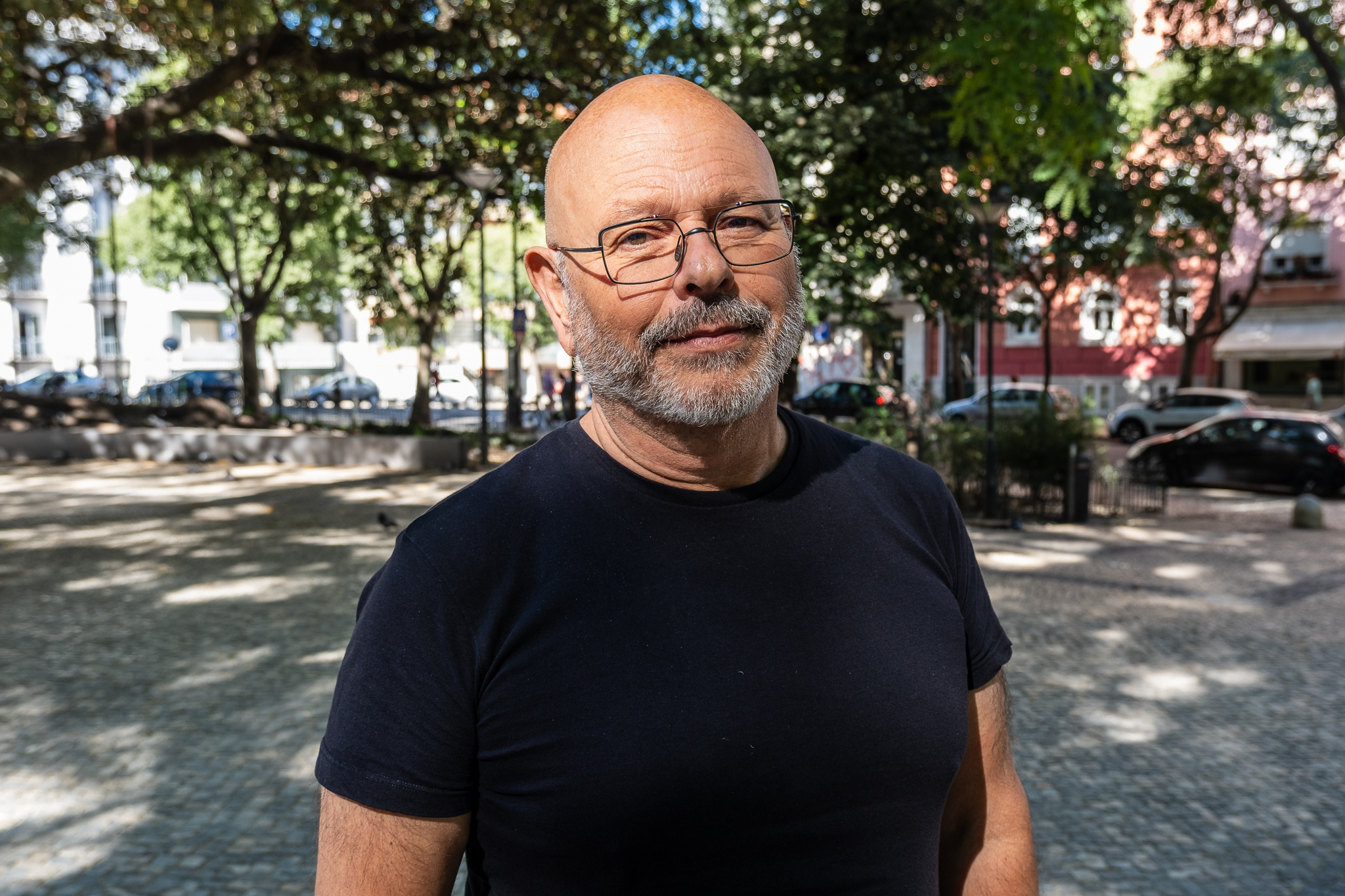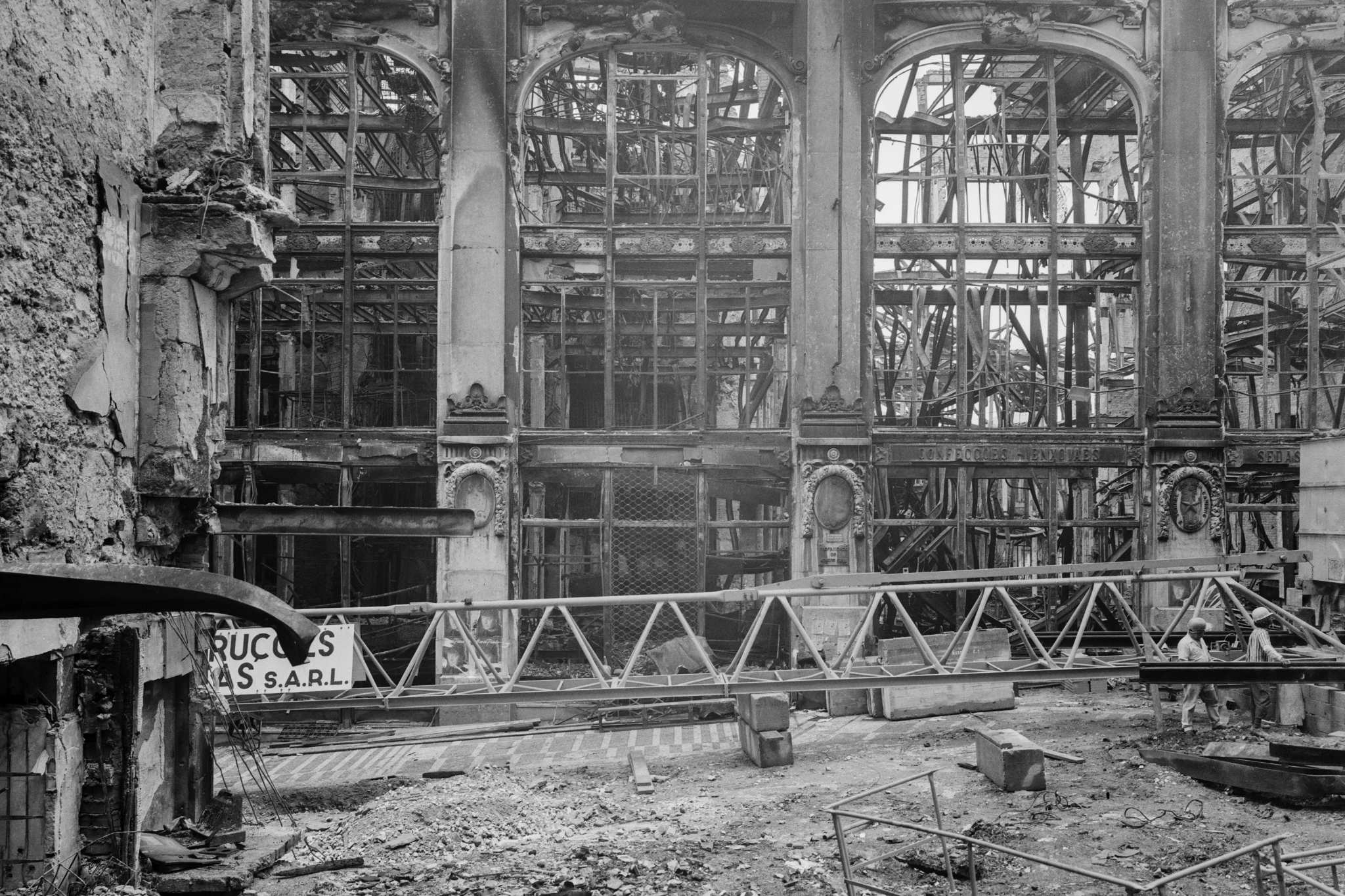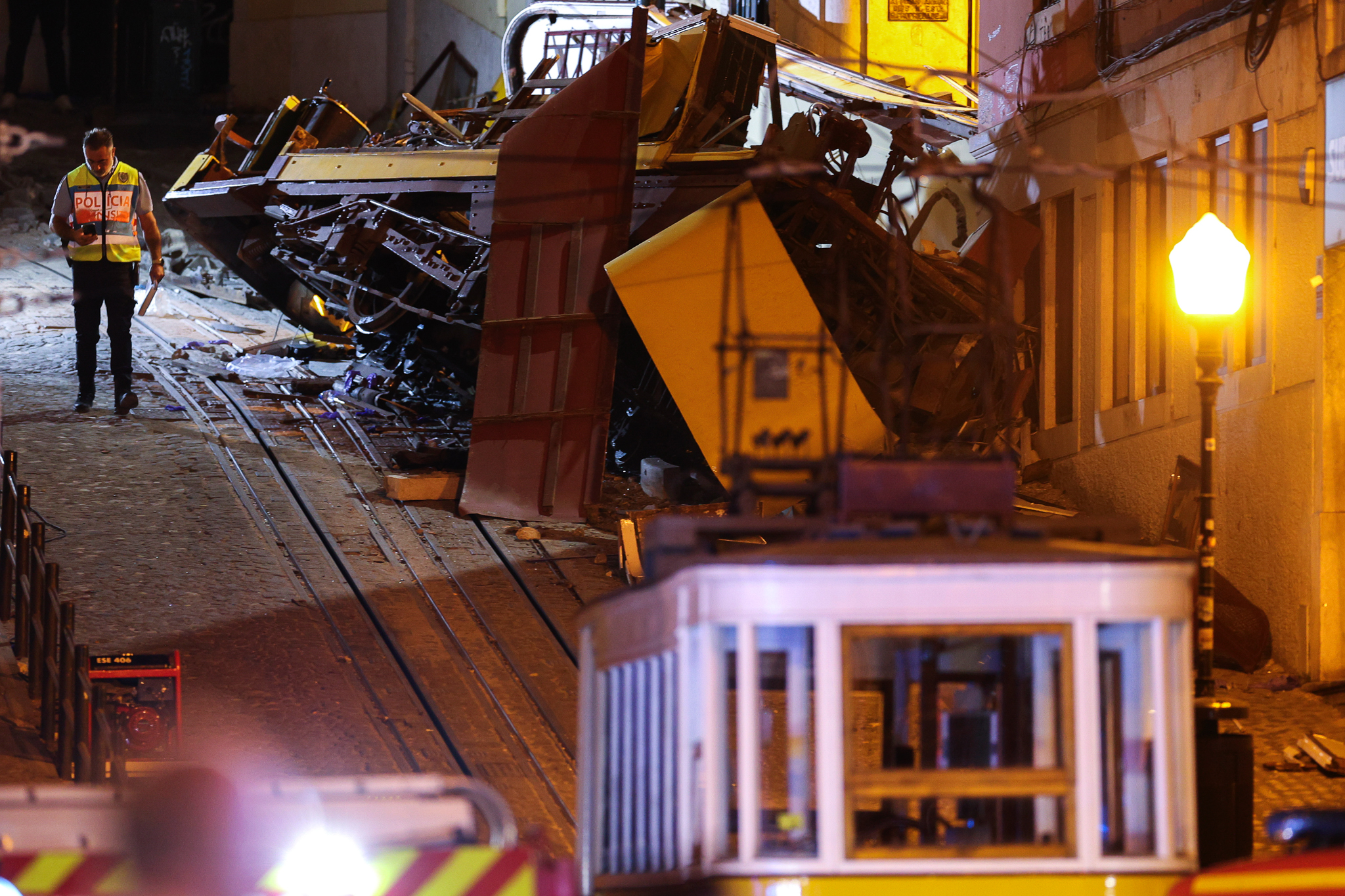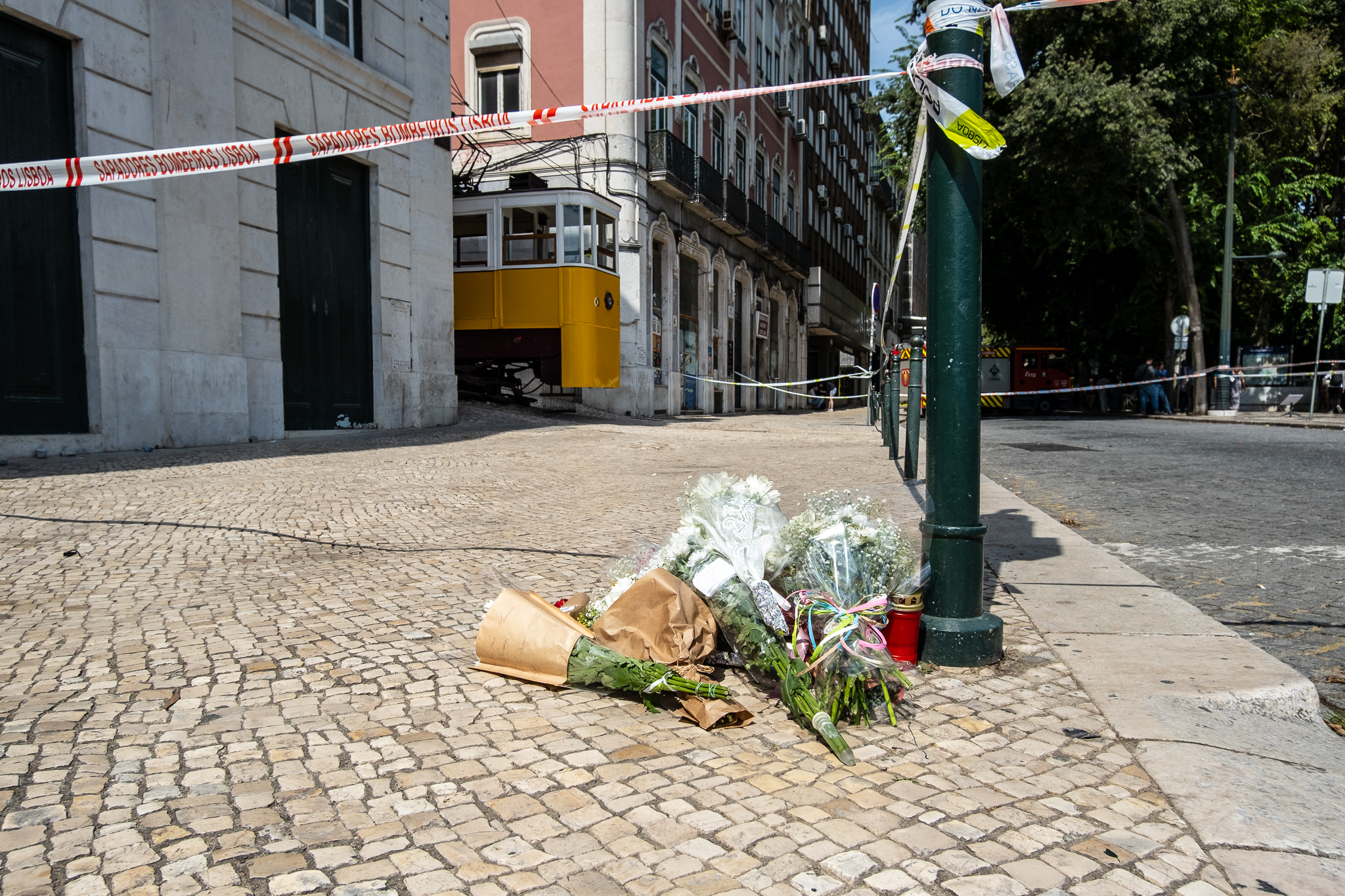Station in Alcântara will leave room for the future railway tunnel between the Cascais Line and the Belt Line and for the future Alcântara traffic circle.
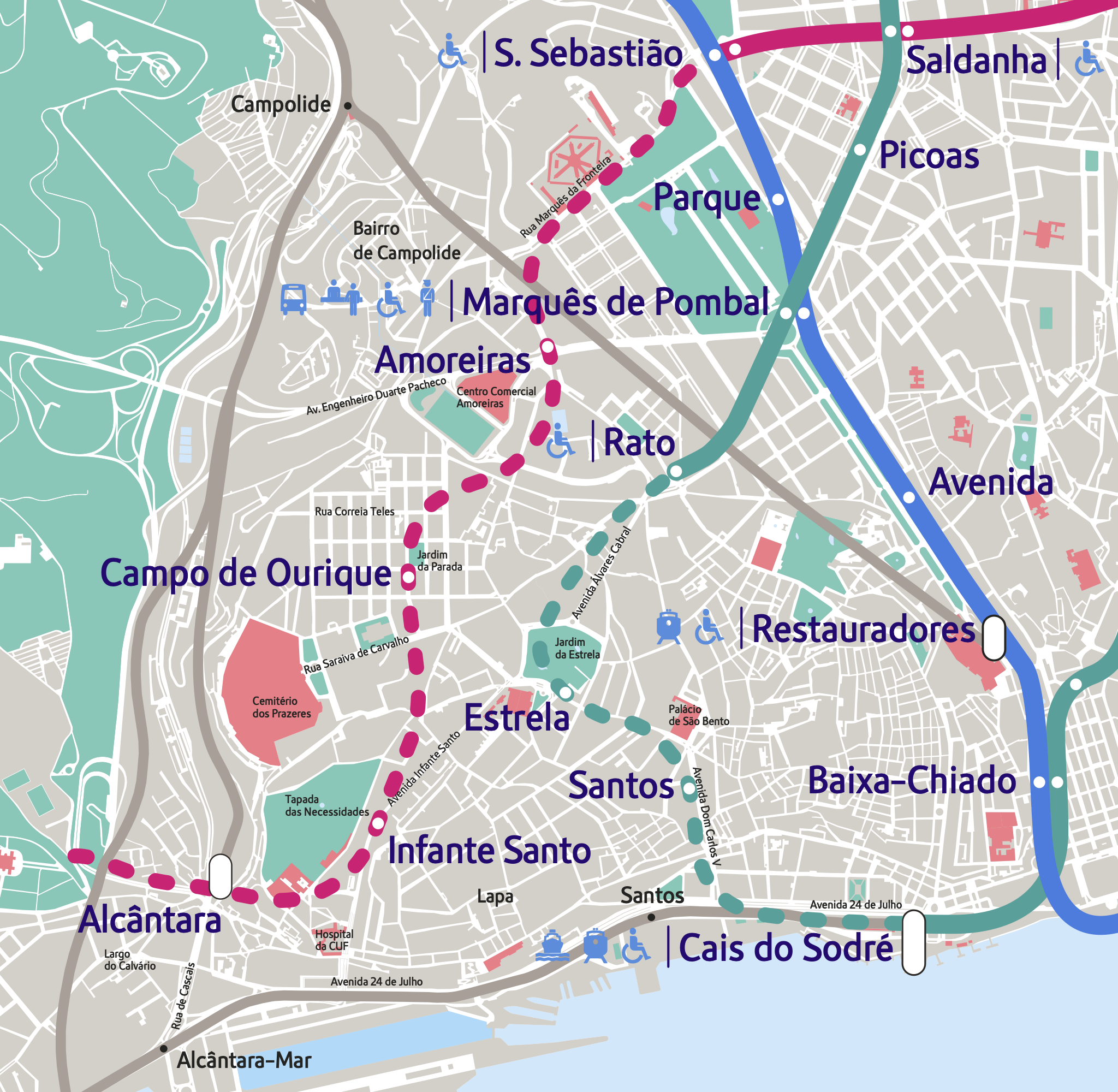
The Lisbon Metro has concluded the Previous Study phase of the Red Line Extension between São Sebastião station and Alcântara station for Environmental Impact Assessment purposes and submitted to the Agência Portuguesa do Ambiente (APA), last December 27, the Environmental Licensing Process related to this study.
The extension of the Red Line between São Sebastião and Alcântara should start from the already built area, located after São Sebastião station, through a tunnel section built next to the Palácio da Justiça and will have a total length of about four km, including about 380 meters in viaduct. Along the double-track tunnel route, the construction of three new underground stations (Amoreiras, Campo de Ourique and Infante Santo) and one surface station (Alcântara) is planned.
In the process of developing and assessing the solutions in the Preliminary Study phase, Metro de Lisboa held meetings with various entities and bodies to present the route solutions. In the scope of the development of the Environmental Impact Study, the public company also consulted 41 entities/companies to obtain information on the register of infrastructures in the area of intervention of the present project and its surroundings, in the municipality of Lisbon, or to supply other information considered relevant to the development of the study in question.
The extension of the Red Line is part of the Recovery and Resilience Plan 2021-2026 (the famous "European bazooka") and has an overall funding amount of 304 million euros. The expectation is that this Red Line extension will be out to tender in the year 2022 and that it will be a reality by 2025/2026.
The studies carried out indicate that the daily demand captured in the four stations included in this extension will correspond to an increase in the first year after the start of operations of 11 million passengers (4.7%) throughout the network. Considering the 30-year analysis, the benefits generated by this Red Line project amount to 1,047 million euros. The new configuration of the Red Line will manage to remove 3.7 thousand individual vehicles from Lisbon's daily circulation, which may mean 6.2 thousand tons less CO2 in the first year of operation, according to estimates.
Alcântara Station to be prepared for railway tunnel and traffic circle
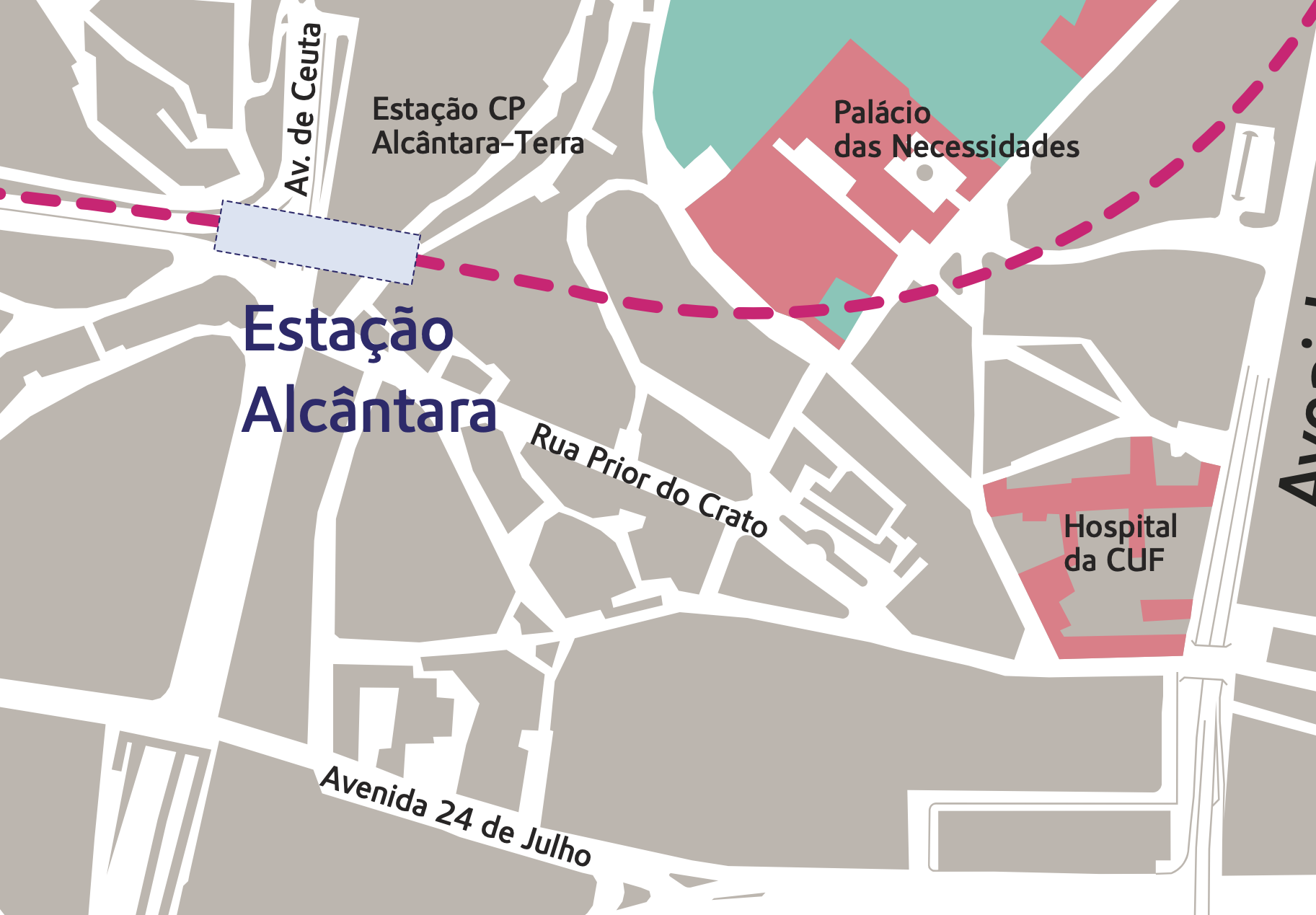
The Station Alcantara will be located on the west side of the General Domingos de Oliveira Square, on the Access Road to the 25th of April Bridge. Its limits will be Rua da Quinta do Jacinto to the north, Calçada da Tapada and Rua de Alcântara to the south and Praça General Domingos de Oliveira to the east. It will be a surface station, similar to Campo Grande.
The new viaduct will cross the Alcântara valley, between the Livramento bulwark and the Alcântara station, and will be laid in such a way that it does not conflict with existing conditions or the versatility of future developments at this location. As part of the construction of the Alcântara station, Lisbon Metro will clean, protect, and refurbish the long-forgotten outer wall and interior of the Livramento Bastion.
The station's implantation is fixed not only by the constructed limits mentioned above, but also by future reserves, namely the railway tunnel for the future integration planned between the Cascais Line and the Cintura Line, and the new Alcântara traffic circle, foreseen in the Alcântara Urbanization Plan. In other words, the expansion of the metro in Alcântara will leave room for all the projects planned for that area, from the railway and roadway points of view. In the future, Alcântara could become an important transportation interface, especially for those who live or work in Oeiras and Cascais.
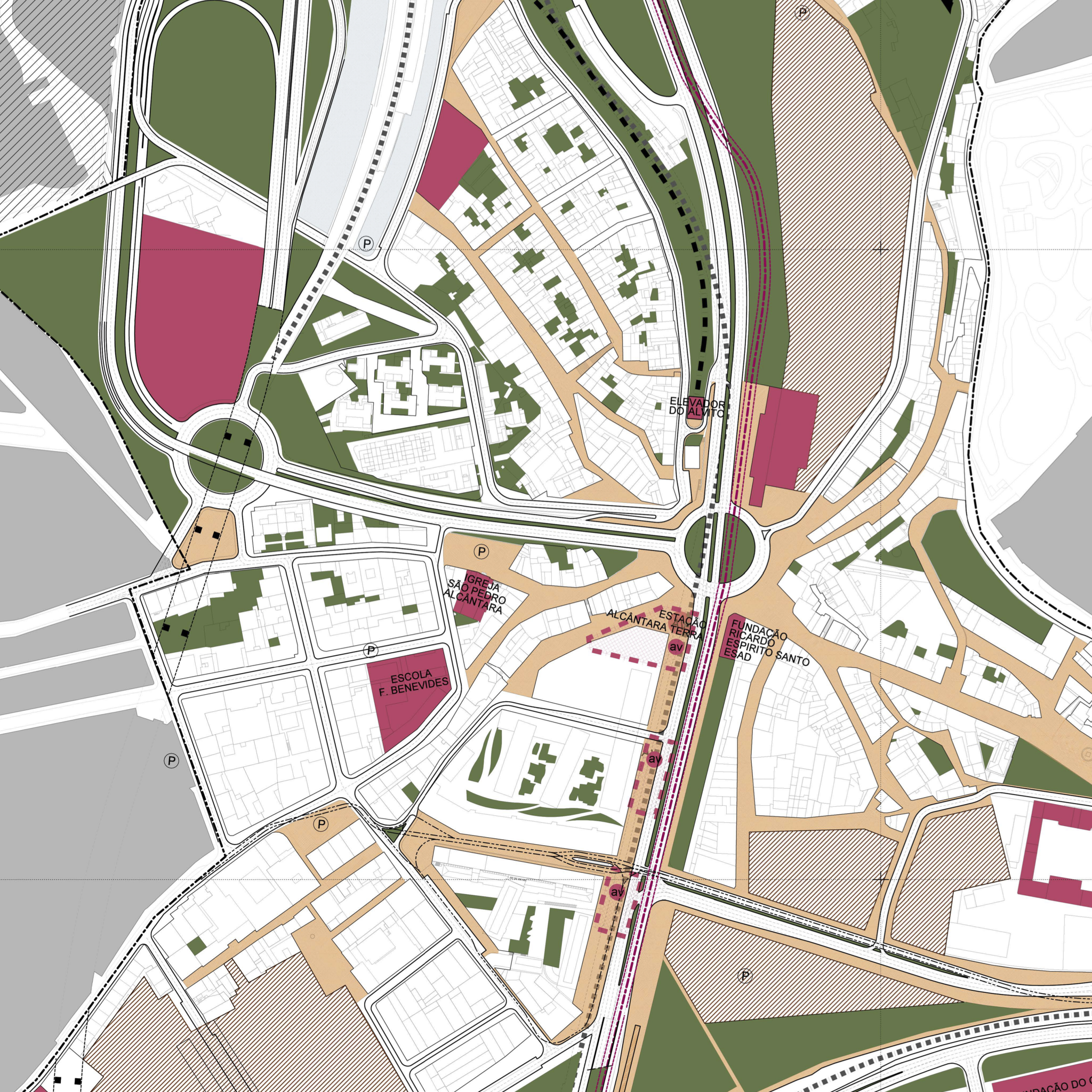
Campo de Ourique Station will be 31 meters deep
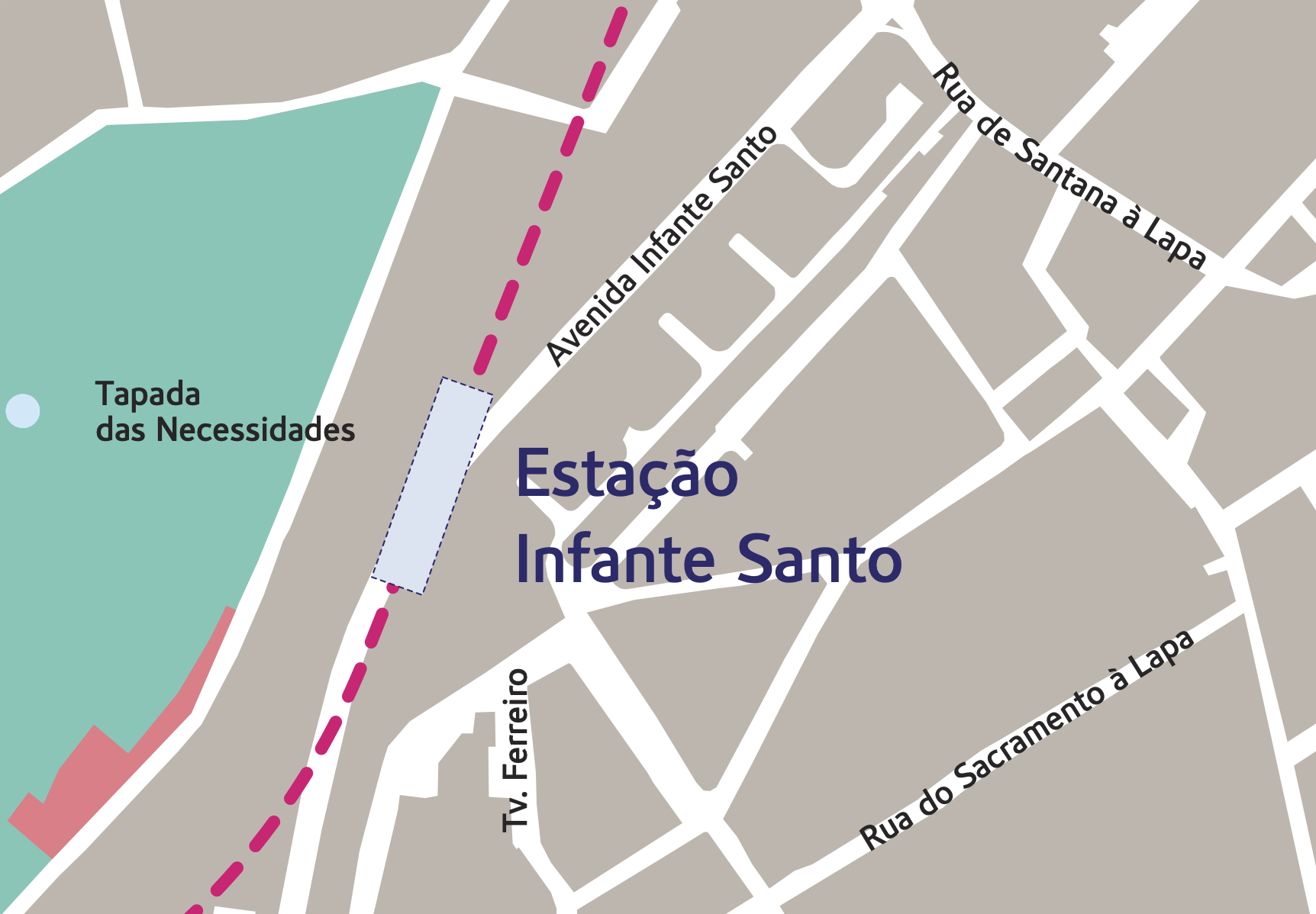
The Station Infante Santo will be located between Avenida Infante Santo and Calçada das Necessidades, on undeveloped municipal land, free of any construction. It is planned to excavate the tunnel by applying the so-called "New Austrian Tunneling Method" (NATM) and using a vertical attack well aligned on its axis. The station will have a depth of 29.5 meters and two entrances.

The Campo de Ourique station will be located under the Jardim Teófilo Braga/Jardim da Parada, in the Campo de Ourique neighborhood. This station will represent a great challenge from a constructive point of viewconsidering the tight urban grid, with streets with only one traffic lane per lane and lack of parking alternatives. The station will have a depth of 31 meters and three access points.
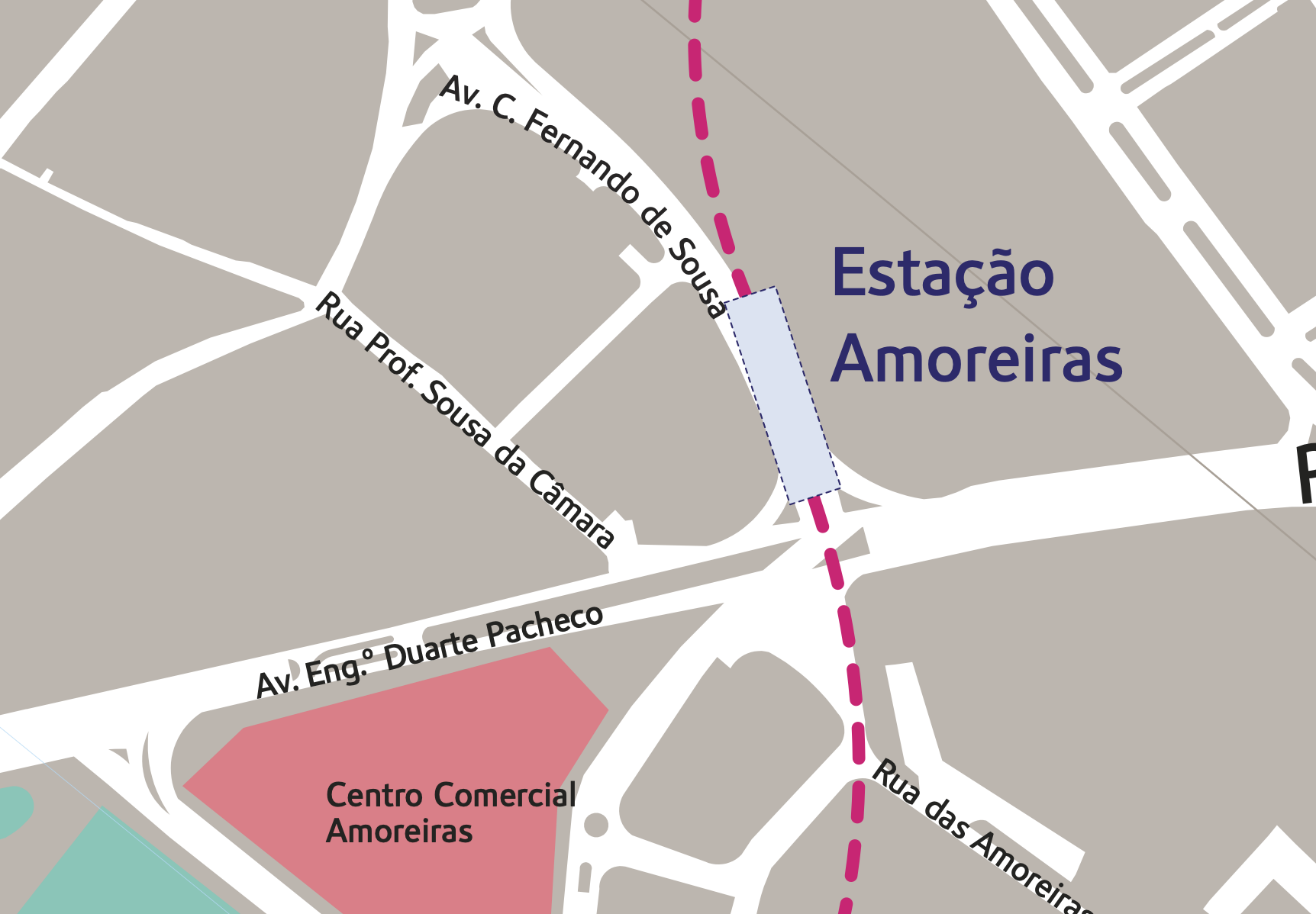
The Station Amoreiras will be located along Conselheiro Fernando Sousa Street, near its intersection with Avenida Engenheiro Duarte Pacheco. It is expected to be built in the open air, by the C&C ("Cut and Cover") method and will have a depth of only 18.5 meters. It will be the shallowest of the three.

